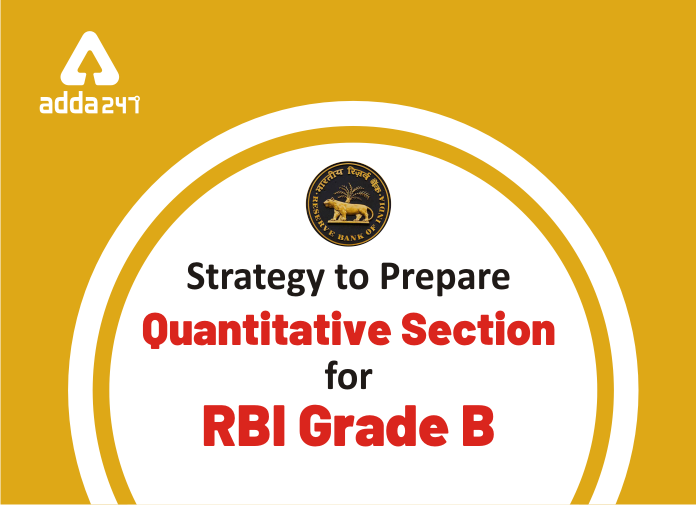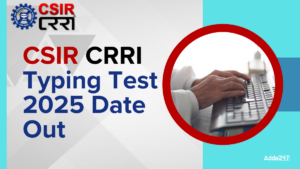RBI Grade B exam notification 2019 is already released. RBI Grade B exam for prelims is about to be held on 9th November 2019 while the mains exam is scheduled to be held on 1-2 December 2019. Students preparing for RBI Grade B officer exam must be looking for the right guidance that can help them to sail through the examination. RBI Grade B exam differs from other banking exam due to the nature of difficulty and the RBI Grade B exam pattern. To get through such a prestigious exam, there is a need for a well planned strategy.
RBI Grade B Exam
This article is dedicated to deal with the preparation strategy of Quants in RBI Grade B. We have already given a full length strategy to crack RBI Grade B exam. Before digging deep into the quants strategy, we are giving the RBI Grade B exam pattern below:
| Subject | No. Of Questions | Marks |
| General Awareness | 80 | 80 |
| Maths | 30 | 30 |
| English | 30 | 30 |
| Reasoning | 60 | 60 |
| Total | 200 | 200 |
A majority of candidates feel that the pattern of this exam is inclined towards general awareness and reasoning, and that Quantitative aptitude holds little importance during preparation. However, the Quantitative aptitude section is responsible for the elimination of a large number of candidates. There is a sectional cut-off in RBI Grade B exam. The sectional cut-off for this section in the previous years was 14, out of only 30 questions. To clear this, at least 20 questions with a minimum of 80% accuracy has to be solved. Considering the fact that an average of 75 seconds is required to solve one problem, a minimum of 25 minutes is required to solve this section. This can be minimized only through practice and hard work.
Strategy to prepare Quants for RBI Grade B exam
According to the trends of RBI Grade B 2019 exam, there is particular pattern of questions asked in the examination. Topic-wise analysis is:
- Data Interpretation: around 10 questions
- Series: 3-5 Questions
- Data Sufficiency: 3 Questions
- Quadratic Equation: 2-4 questions.
- Miscellaneous: 5-8 Question (Ratio, Percentage, Mensuration, Algebra)
Topics-wise strategy:
1. Data Interpretation: This topic will have questions with a moderate to high difficulty level. This section is the most common and gaining popularity due to its prevalence in every bank exam. Pie charts, bar diagram and graphs are the most scoring topics.
Quick tips
- Read the questions carefully and understand what is being asked. Chances are that there will be a few questions that won’t even need calculations.
- There will always be some questions that are comparatively easier to solve than others. Identify these questions and solve them quickly.
- Focus on solving one question at a time. Do not try to confuse yourself in multiple questions.
- Solve only what the questions demand. DI questions have an enormous amount of data that can confuse the candidate. For example, a graph can be given stating the income and losses of few years and you are asked to find the expenditure of year A. Do not try to solve expenditure for year B, unless it is used to find the value of expenditure in A. Read carefully and then solve accordingly.
- While solving the questions, avoid mixing up the data by writing the figures on the rough sheet. Assign proper and unique variables to it so that you do not get the figures mixed up while solving.
- Practice as much as you can to improve your speed and accuracy
2. Series: Number series are quite tricky topics. Don’t rush through solving these type of questions. Give it a good amount of time to achieve 100% accuracy. There can be several patterns under this topic such as:
- Prime Numbers
- Squares/ Cubes
- Patterns in differences
- Pattern in alternate numbers
- Geometric series
- Odd one out
- Cube roots/ square roots
3. Arithmetic: Airthmetic will give you the much needed marks to clear the sectional cutoff for the quantitative section of RBI Grade B. Topics that can be prepared under this are:
- Percentage
- Averages
- Simple Interest/ Compound Interest
- Profit and Loss
- Ratio & Proportions
- Time and Work
- Time Speed and Distance
4. Quadratic Equations: Quadratic equation demands a lot of time in solving the questions. There is no shortcut to success here. So, if you don’t know how to solve them in exam, do not pick them. Learn the formulas and practice some common questions to leave no stone unturned for errors to happen.
5. Data Sufficiency: Read every statement carefully. Make no assumptions about any data. If you are finding so much of calculation, you are probably doing something wrong. Again, practice is the key to success.
Other tips to crack the RBI Grade B quants:
- Practice as many questions as you can. Give Mock tests and maintain speed and accuracy.
- Data interpretation should be attempted first.
- Next, solve the Arithmetic and Series questions.
- Solve only those questions which are easy and require less than a minute
- Data sufficiency should be taken only when you have time.
- Do not try to solve every question
- Focus on speed and accuracy
Preparing for RBI Grade B? Get free study material for RBI Grade B here




 Weekly Current Affairs One Liners 23rd t...
Weekly Current Affairs One Liners 23rd t...
 CSIR CRRI Typing Test 2025 Date for JSA ...
CSIR CRRI Typing Test 2025 Date for JSA ...
 Can Final Year Students Apply for SBI PO...
Can Final Year Students Apply for SBI PO...


